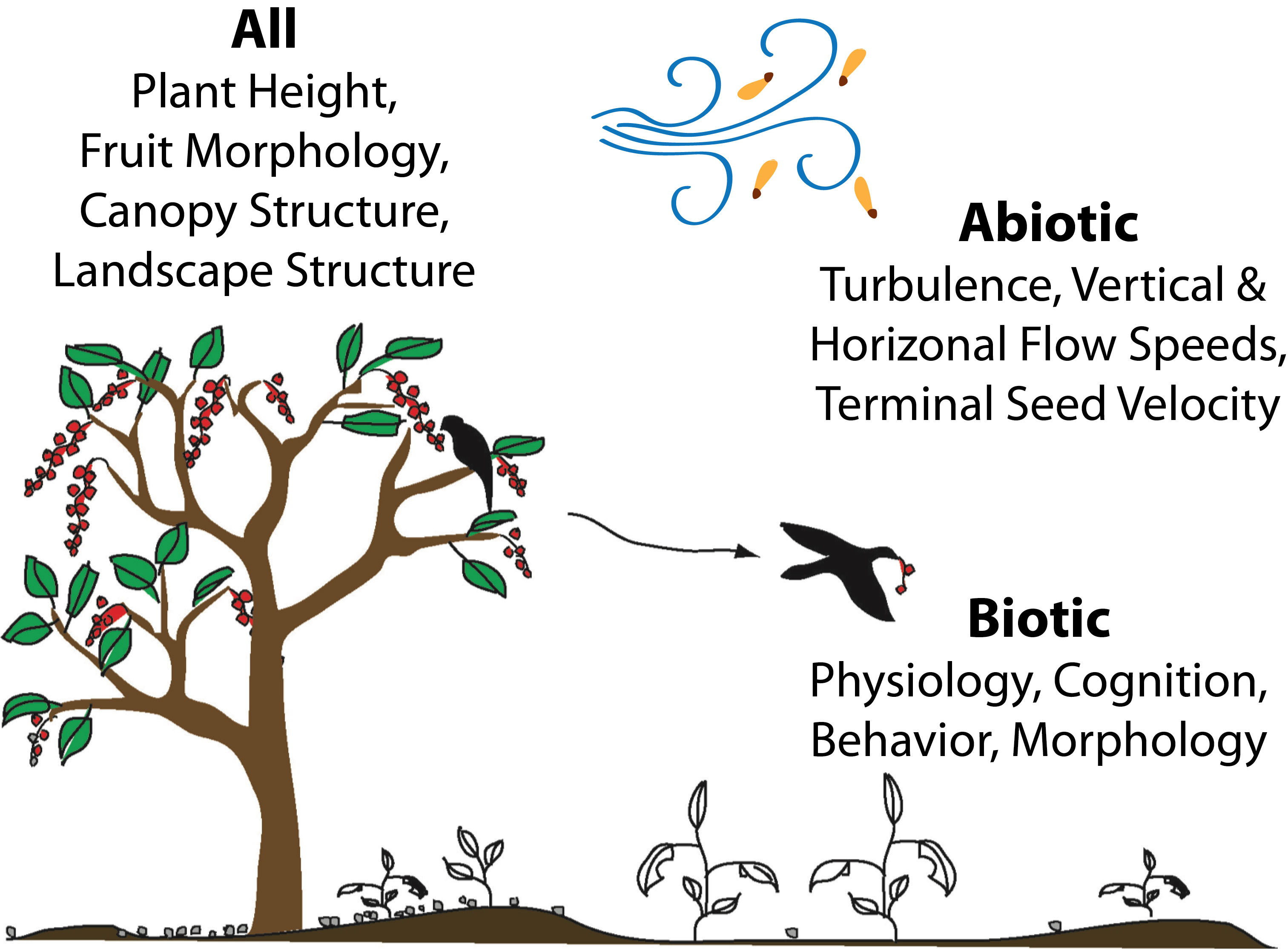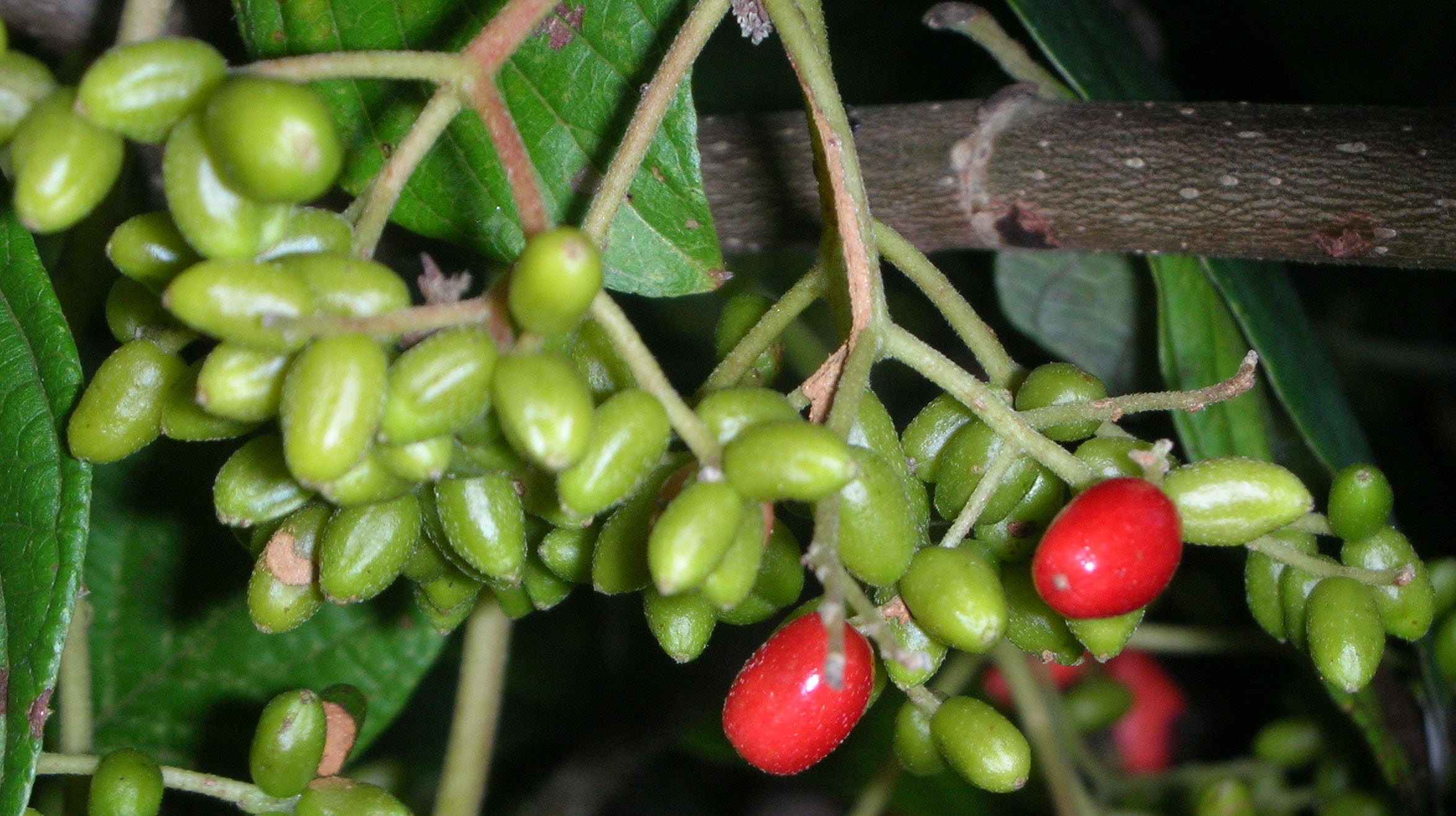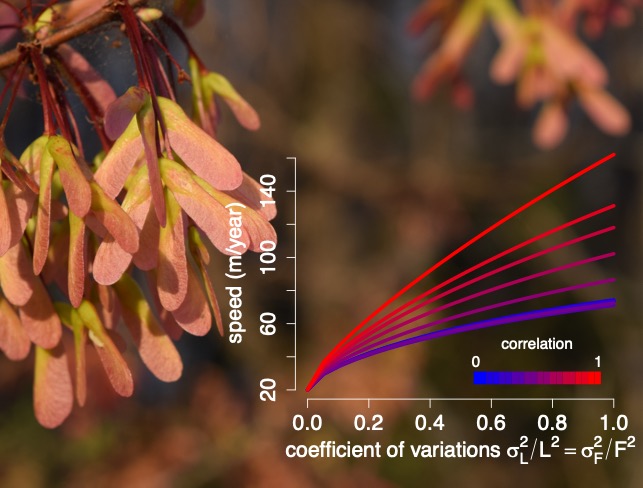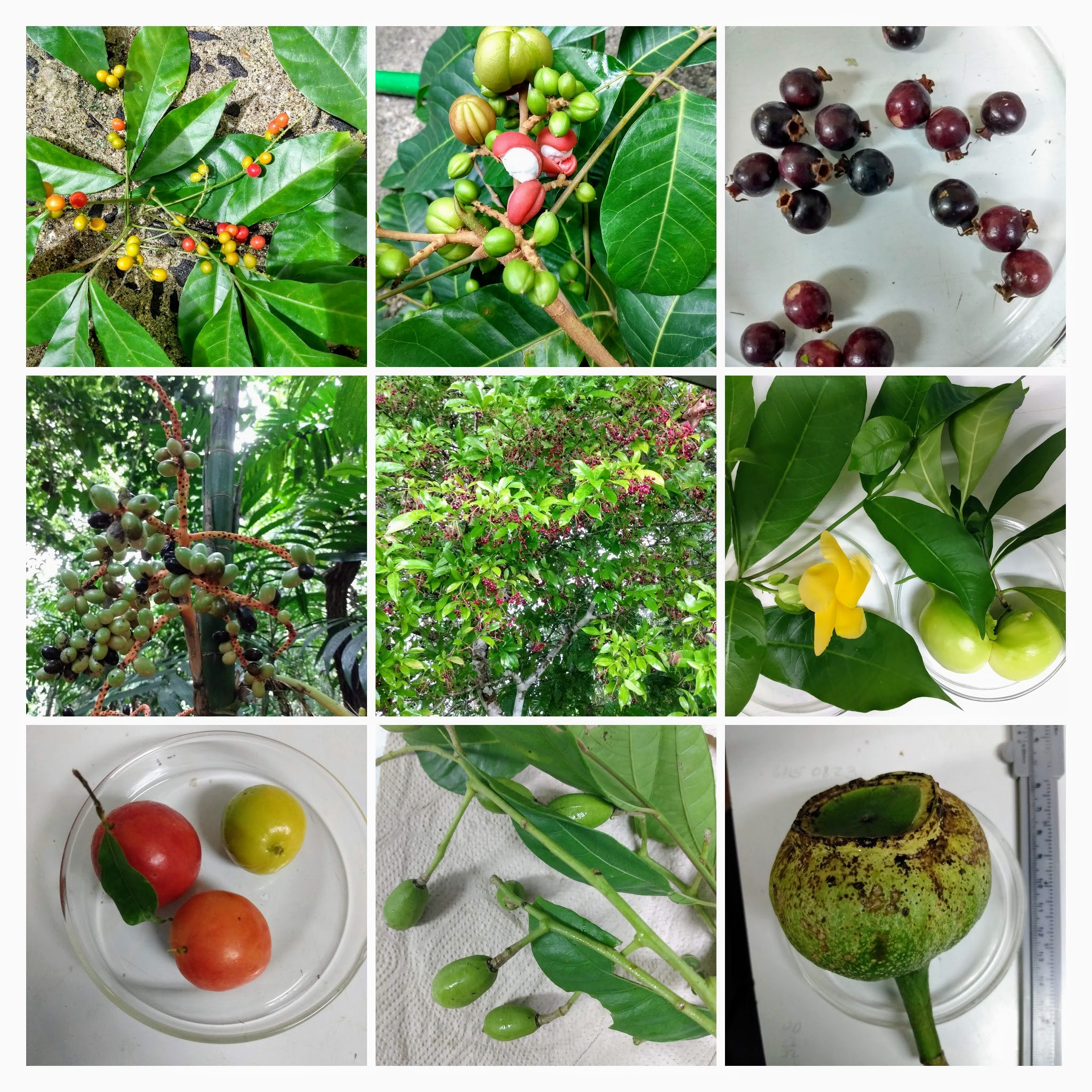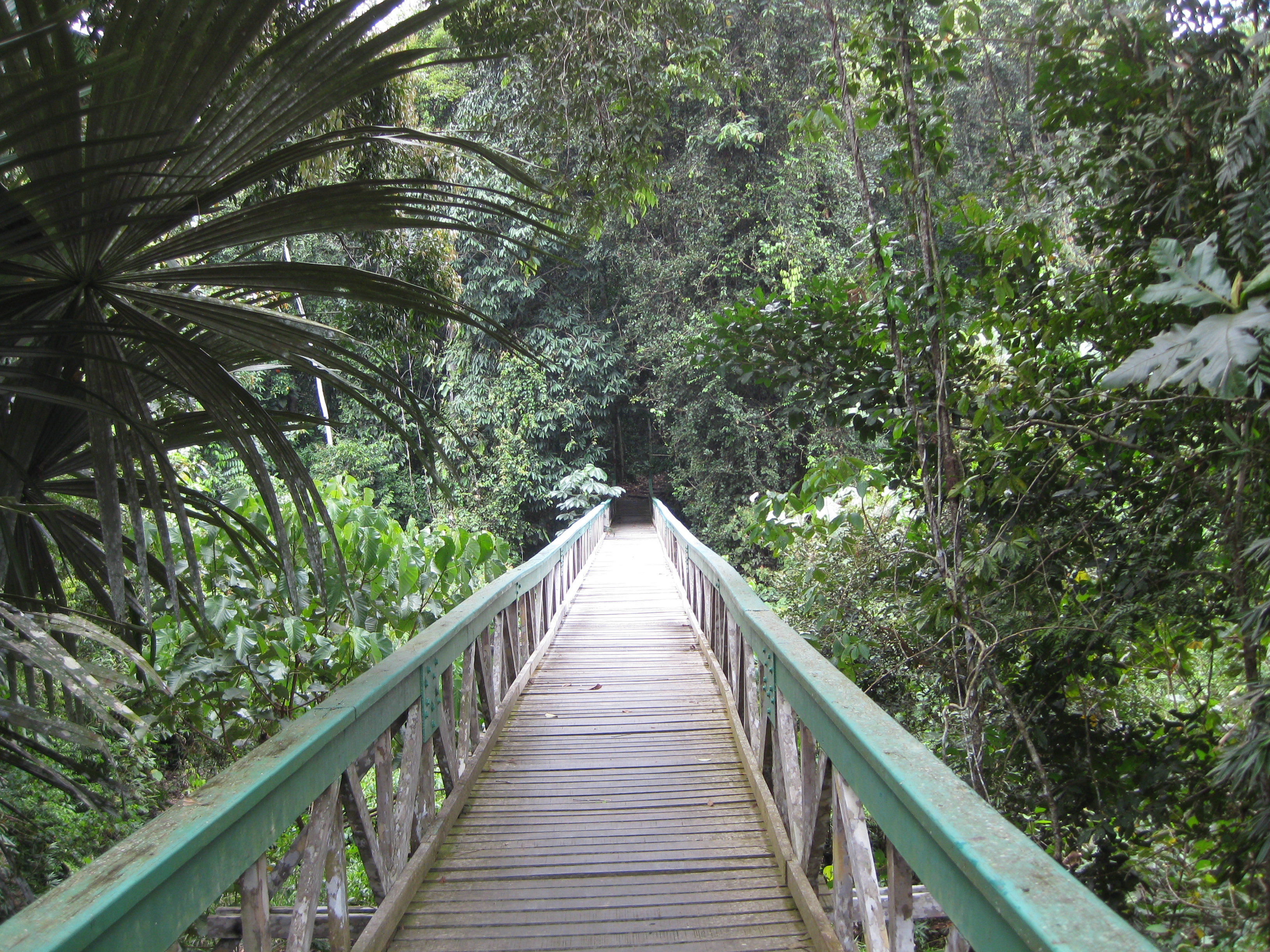Seed Dispersal and the Seedscape
Investigating Mechanisms Driving Plant Spatial Patterns
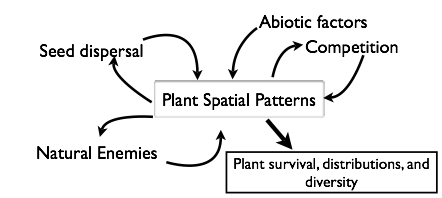
Patterns of seed deposition following seed dispersal influence the seedscape The aspects of the biotic and abiotic environment surrounding a seed that influence later stages of plant recruitment (Beckman & Rogers 2013). and determine subsequent interactions, such as the likelihood of mortality due to natural enemies (Beckman et al. 2012, Beckman & Rogers 2013). In theoretical models, mortality due to specialized natural enemies maintains plant diversity, and the strength of this effect on species richness depends on dispersal (e.g., Stump et al 2020). Our meta-analysis provides empirical support for the predicted patterns of distance- and density-dependent mortality and suggests natural enemies may be driving these patterns in plant communities world-wide (Comita et al. 2014). However, few studies have quantified the shifts in spatial patterns from the seed-to-seedling stage as predicted by this hypothesis, as this data is difficult to collect.
We investigated whether observed spatial patterns of seed dispersal and subsequent patterns of seedling establishment of 24 tree species in Central Panama follow predicted spatial patterns (Marchand et al. 2020). Using new, sophisticated statistical modeling methods, we combined predictions from multiple dispersal kernels to obtain more robust inferences. We show that, while survival in the seed-to-seedling transition generally increases with distance from potential parent trees as expected, the strength of this effect does not generate significant spacing from the seed-to-seedling stage and potentially is not sufficient to promote local coexistence among species. Note, while we used one of the most comprehensive datasets available in tropical forests in which seed trap data have been censused weekly since 1988 by the Smithsonian, we still only had enough data to fit dispersal kernels to 24 common species out of over 300 species in this system. To address these limitations and incorporate more species, we are currently developing a multispecies modeling approach, where dispersal models are fit to a group of species using plant traits.

To investigate how different patterns of seed dispersal by vertebrates interact with natural enemies to determine spatial patterns of seedling establishment, we have been developing a variety of simulation modeling approaches. Using a spatially-explicit simulation model developed with empirically based functions, we showed that three factors were crucial in determining spatial distributions of seedlings around isolated trees: local-scale clumping of seeds due to vertebrate seed dispersal, natural enemy type (i.e. insect seed predators vs. soil-borne pathogens), and the dispersal distances of seeds relative to those of natural enemies (Beckman et al. 2012). We have extended this model to further examine the consequences of seed deposition by animals and foraging behavior of insect seed predators for spatial patterns within a population of plants (Beckman et al., in prep). Comparing observed patterns of seedling establishment (e.g., Marchand et al 2020) with those predicted by mechanistic models (e.g., Beckman et al. 2012) will further our understanding of the mechanisms that shape tree spatial patterns.
